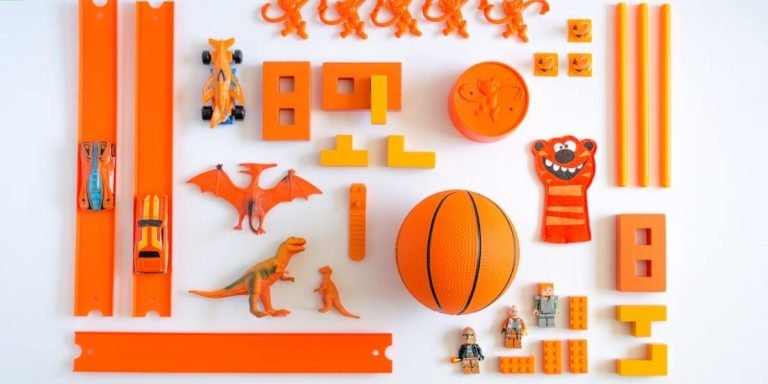Kinesthetic Awareness: Unlocking Your Child’s Potential Through Movement Learning.
Understanding your child’s physical strengths and weaknesses is crucial in their overall development. One key factor that significantly influences this understanding is “kinesthetic awareness.” Also known as body awareness, it aids children to perceive their bodies’ capabilities and limitations without the need for visual confirmation.
Kinesthetic Awareness isn’t merely about recognizing bodily movements; it sets a strong foundation for activity-based learning. By incorporating movement into the education system, we can make learning not just fun but also very effective, thereby unlocking every child’s hidden potential.
Did you know?
85% of school-age children are predominantly kinesthetic learners, which means they learn better when moving their bodies. Yet, traditional educational methods often fail to cater to this learning style.
Understanding Activity Based Learning and Kinesthetic Awareness
Activity-based learning has proven to be a game-changer in the realm of early childhood education, particularly because of how it impacts kinesthetic awareness. This notion signifies cognitive recognition through bodily movements and tactile experiences – essentially a ‘learning by doing’ approach. In 2023, amidst rapid technology integration in various fields including education, activity-based learning continues its rise as an effective method for boosting young learners’ understanding.
The contemporary educational landscape is increasingly recognizing the benefits tied into employing physical activities as part of curricula – from improved motivation to heightened retention rates. It’s important not just because children have an inherent need for movement but also due their tendency to understand concepts better when they’re actively involved instead of being passive recipients.
Technology assists with these active-learning methodologies effectively; interactive whiteboards replacing chalkboards or tech-enabled role-playing games are instances where technological tools aid students express themselves better while simultaneously enhancing their mental conections between theoretical knowledge and practical situations.
In Conclusion, activity based leaning paired with targeted technology can undeniably foster stronger student engagement along with profound developmental advancements like discerning cause-effect relationships or improving problem-solving skills among children- all leading toward significant improvements in kinesthetic awareness.
The Principles of Kinesthetic Learning in Educational Settings
As we delve into the 21st century, educators and parents are becoming more aware of the benefits “kinesthetic awareness” has in childhood education. When incorporated properly with technology integrations, it can revolutionize how children comprehensively engage with educational content.
Kinesthetic learning is a hands-on approach to education that involves students carrying out physical activities rather than just listening to lectures or watching demonstrations. It focuses on movement and action as primary modes of cognitive development.
There are five fundamental principles behind kinesthetic learning:
1. Engagement: Kinesthetic learning trains children’s minds not only through intellectual stimulation but also by physically engaging them which makes lessons fascinating and tangible.
2. Personalization: Activity-based leaning allows for personalized instruction tailored for each child’s specific needs making it easier to understand complex concepts.
3. Improvement in Cognitive Skills: This teaching method furthers cognitive skills like memory retention since muscle movements help cement lesson materials deep within learners’ subconsciousness.
4. Cooperative Learning : Children work together on tasks promoting peer interaction , enhancing their social & teamwork abilities .
When blended with seamless technology integration , tools such as interactive whiteboards smart tables tactile image books boost efficiency effectiveness these kinesthetics methodologies further .
How Activity Based Learning Enhances Motor Skills Development
Activity Based Learning (ABL) serves as an instrumental approach when it comes to fostering kinesthetic awareness and motor skills development among youngsters. By employing a hands-on, interactive teaching method, ABL encourages children not only to understand but also experience the concepts they are learning.
Many educators in 2023 – always on the lookout for effective educational strategies – recognize this value and integrate relevant technology into their curriculum. This strategy is particularly useful with regard to implementing digitally-augmented reality games or exercises that require physical interactions from students.
When we talk about ABL enhancing motor skills development, think of it like this: Imagine playing an augmented reality game where children have to catch virtual fruits falling from a tree by moving around physically. The direct participation in such activities provides young learners opportunities first-hand how different parts of their bodies function while performing tasks requiring locomotion or coordination.
In addition, these tech-enhanced experiences offer multiple benefits:
1. **Enriched Understanding**: Children engaged actively tend to develop deeper comprehension compared just listening during lectures alone.
2. **Physical Development**: Regular involvement allows muscle strengthening plus advances agility.
3.ComponentModeling*: Real-time feedback can coach them correct bodily movements improving overall performance over time.
Designing Effective Activity Based Lessons for Various Age Groups
In the realm of childhood education, designing effective activity-based lessons for various age groups holds immense significance. Particularly in an era where technology integration is reshaping our learning models, kinesthetic awareness becomes a powerful tool to engage young minds effectively. Through this approach, educators can cultivate students’ inherent ability to learn by doing; it’s not simply about making education fun but also tailoring educational experiences that promote holistic development.
One of the key facets when crafting these interactive activities is understanding and considering the developmental stage of learners according to their age group. A pre-schooler will have different cognitive capabilities compared to a fourth-grader or high school student – hence why customizing strategies should be at the heart of lesson planning process.
Remember – taking strides towards integrating technology within classroom spaces doesn’t mean replacing teacher-student interactions completely but rather amplifying those connections through innovative edtech resources dedicatedly aligned with infusing kinetic energy across teaching methodologies unraveling enhanced learner participation thereby improving overall academic outcomes dramatically.
Tailoring Activities to Improve Kinesthetic Intelligence in Early Childhood
In childhood education, fostering “kinesthetic awareness” through activity-based learning has garnered increased attention in 2023. As educators and parents alike strive to create enriched environments for developing young minds, the value of physical movement becomes abundantly clear.
Activity planning is crucial at this juncture. For children under five years old, activities should be simple yet stimulating enough to engage their innate curiosities while simultaneously building kinesthetic intelligence. Examples include puzzles that encourage manipulation of objects or games like Simon Says which involve following motor commands.
As they advance into primary school age (6-10), children demonstrate sophisticated control over body movements with a refined understanding of spatial relations than before – an aspect integral to enhancing kinesthetic intelligence. Thus, the focus shifts towards structured group activities such as relay races or dance-offs where kids learn about rhythm and motion and build team spirit in a fun way.
Technology can also play a pivotal role here! With many interactive apps available on tablets today that promote moving around physically within designated areas using augmented reality technology; these are excellent tools for integrating education with movement based exercises providing both simulated interaction along with actual kinetic experience too!
Lastly focusing on middle-schoolers aged between 11-14 years; introducing them to sports could be beneficial since it offers potential avenues not just for enhanced bodily coordination but also simultaneous strategy development adding up effectively towards holistic mind-body growth .
Strategies for Incorporating Physical Movement in Adolescent Education
The integration of physical movement or kinesthetic awareness into adolescent education is an essential aspect of activity-based learning. This practice harnesses the natural energy and dynamism of adolescents while supporting their holistic development: cognitively, emotionally, socially, and physically.
Educational technology has made it possible to introduce physiology-appropriate classroom activities that enhance knowledge retention in children aged 12-18 years old. Virtual reality (VR) games designed around curriculum content are a prime example for incorporating movements within lesson plans without compromising academic integrity.
Combine teaching methodologies with physical exercises by designing cross-disciplinary lessons that require both intellectual effort and bodily motions – such as Science experiments where students have to move around collecting samples or Math problems solved via team sports scoring.
Promote active breaks during class hours involving light aerobic activities like stretchingor brief yoga sessions can help restore student’s focus besides promoting mental well-being.This also instills the habit of regular exercise among them which crucial at this stage due to health issues linked with sedentary lifestyle habits prevalent today in 2023.
Conduct revision sessions through role-playing techniques based on learned material – an excellent strategy particularly when dealing with narrative subjects like History or Literature.These methods not only engage multiple senses but cater especially well towards learners who thrive upon interpersonal interaction .
Measuring the Impact of Kinesthetic Activities on Student Outcomes
Learning methodologies have significantly evolved over the past few years. One of them is Activity-Based Learning (ABL), involving kinesthetic activities that play a pivotal role in enhancing students’ outcomes. These activities engage students physically, promoting circulation and boosting brain function thereby improving their ability to absorb information.
The impact of these kinesthetic activities can be measured through various performance metrics related to student engagement and educational results. For instance, an increase in class participation or improved scores on tests can indicate heightened levels of comprehension owing to ABL methods instilled by educators.
Tools and Techniques for Assessing Kinesthetic Skill Advancement
Educators can integrate technology into their assessment methods for a more effective evaluation of students’ progress in this area.
1. Digital Portfolios: One way teachers can track progress is through digital portfolios that showcase each student’s growth over time—think videos of gravity-defying dance moves or images of complex model constructions which highlight their increasing “kinesthetic awareness”. This not only documents improvement but also allows for self-assessment where students reflect on what they’ve learned.
2. Virtual Reality (VR) Systems: VR systems immerse users in simulated environments where they could physically interact with virtual objects using controllers mimicking real hand movements; a great tool to measure advancements in spatial understanding and motor skills typical elements fostered through Activity Based Learning.
3. Motion Capture Technology: Used extensively entertainment industries like film-making & gaming, motion capture technology tracks body movements accurately making it an innovative way educators may evaluate learner’s physical coordination and movement efficiency often overlooked during conventional assessments.
4.Time-on-Task Analysis App: These applications record how long students spend on different tasks providing hard data about engagement levels while carrying out various kinetic games or exercises—they are efficient at indicating any positive correlation between increased “kinesthetic awareness” & overall academic performance.
Case Studies: Long-Term Benefits of an Active Learning Approach
With an ever-increasing focus on technology integration in education and the need to utilize teaching methods best suited for 21st-century learners, applying an active learning approach has become more critical than ever before. In such a scenario, ‘kinesthetic awareness’ plays a pivotal role, bringing about tangible changes in students’ performance—let’s delve deep into some case studies to illustrate this.
Firstly consider study A carried out by ABC University. They replaced traditional lecture-style sessions with kinesthetic activities that fostered interaction and student participation across several classes for one academic year (2022–23). The result was compelling.
Students showed significant improvement not just acadically but also displayed enhanced problem-solving abilities and creativity—an attribute directly tied to fostering kinesthetic awareness.
Further evidence comes from another long-term research project conducted at DEF primary school during the same period of time (2022-23), where educators extensively integrated activity-based learning techniques into their curriculum.
The results manifested themselves as higher engagement levels among students along with improved retention rates compared to previous years where conventional teaching style dominated.
Another noteworthy investigation is Study C initiated by School XYZ within its special-needs department throughout the year 2023 exclusively using technologically enabled tools designed for kinetic instruction.
This innovative approach led these children who were previously struggling learners now exhibit impressive progression in meeting educational milestones typically achieved via orthodox pedagogical approaches – clearly highlighting how tailoring tech-driven experiential modes can be beneficial even on a challenging cohort like theirs!
Conclusion
In closing, nurturing your child’s kinesthetic awareness is not just about physical development. It’s an invitation to unlock unexplored facets of their intellect and creativity as well. As parents or educators, it becomes our prerogative to foster this sensorimotor intelligence in children that can augment the overall learning experience turning them into confident learners.
Feeling overwhelmed? Don’t worry! Let us be a part of your journey as you navigate through the challenges and joys of educating young minds.
Our website is teeming with information on childhood education and resources for both parents and educators alike – aimed at simplifying this intricate process while embracing its beauty head-on. So we invite you to browse around – we are certain you’ll find useful guidance tailored specifically for your needs.







